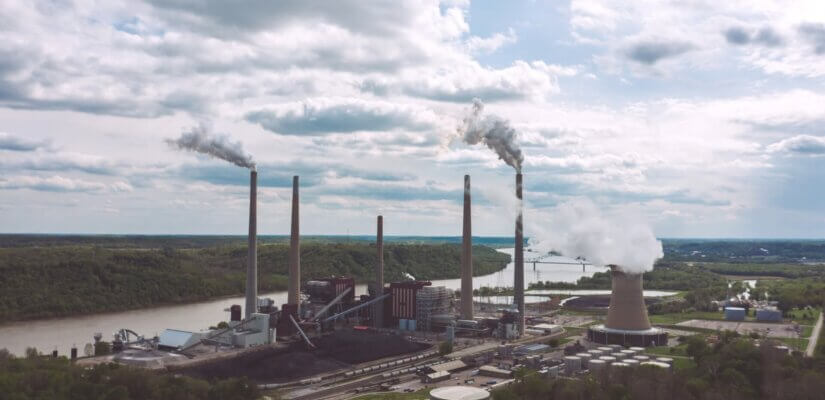
Environmental Audit | A Detailed Guide | EED Lab Services
The environmental Audit includes the following steps towards better compliance of norms stipulated by the State pollution control board leading to preservation of the environment. The broad steps of Environment Audit are:
- Industrial Visit
- Quarterly Audit Data Collection
- Sampling & Monitoring
- Analysis of collected Samples
- Analysis report& Audit Report Generation
- Give Observation, Suggestion, and Recommendation to industry
- Final Report Preparation
Why should an Environmental audit be done?
Environment Audit is mandatory as per guidelines stipulated by the Hon’ble High court of Gujarat. As per prevailing guidelines, every polluting industry has to get Environment Audit to be conducted by the Environment Auditor, recognized by both the Hon’ble High court of Gujarat and Gujarat Pollution Control Board (GPCB). As per prevailing policy, the Environment Audit clients are assigned to each recognized Auditor by the GPCB. Charges are also decided by the GPCB, including other terms and conditions. The number of clients assigned to each auditor is also decided on the quality and integrity aspects. Under the circumstances, we, as Auditors, have no freedom to or change any terms and conditions about Environment Audits.
Treatability Study to evolve design data essential to design Effluent Treatment Plant. Treatability Study is a step leading to improving the efficiency of the Effluent Treatment Plant (ETP), ETP Designs & ETP Up-gradation
Environment Management System Adequacy Certification is yet another area where industries avail services from ATIRA. Such certification is required, as per stipulations of the GPCB, in case the industry is desirous of any change in product mix/production capacity/production pattern.
Area in Adequacy Certification:
- Proposed Product
- Product Change
- Product Mix
- ETP Upgradation
- APCM up gradation
- Proposed (New) Plant
- EMS System adequate for Existing Plant
The broad steps of Adequacy Certification are:
- Industrial Visit
- Sampling & Monitoring
- Sample &Data Collection
- Analysis of collected Samples
- Mass Balance Calculation & Verification
- Water & Air Pollution Load Calculation & Verification
- Final Report Preparation
- Technical Committee Meeting (TCM) Presentation at GPCB Office
BACKGROUND & HISTORY

ATIRA started working in the field of Environmental Pollution Control in the late seventies. In the beginning, ATIRA concentrated its efforts on the specific water pollution and air pollution problems faced by the member textile industries.
Based on the interactions of ATIRA with a large number of the textile mills during the course of these consultancy assignments, ATIRA also realized that there was a growing need for the development of appropriate technology for novel problems of the Indian Industry in a cost-effective and shop-floor friendly way.
This paved the way for ATIRA’s R&D efforts in pollution control. Over the years, ATIRA has also developed techniques for recovery of chemicals from wastewater and its re-use in the manufacturing operations and devices, which reclaim water from the effluents and minimize water consumption.
ATIRA has done a lot of research work and has got many national and international patents.
ATIRA has been undertaking turnkey execution for all types of pollution control plants viz. water, air, solid waste.
In the recent past, ATIRA has developed the “Zero Discharge Technique” to solve the problems of achieving the Zero Discharge standard prescribed by the regulatory authority to landlocked industrial units.
Moreover, ATIRA is carrying out Environment Audit work for many Schedule-I industries for the last 20 years.
ATIRA had a good fortune of undertaking many international projects in the field of Environment Management System such as USAID sponsored Greening the Supply Chain Management, Establishment of Centre for Environmental Counseling & Information (CECI), Indo Dutch Textile Counseling Programme, Indo-Australian-Chinese Project on the treatment of wool scouring effluent and Clean Production project of the World Bank and Switzerland- funded project on Cleaner Technology for the dyestuff and dye intermediates industry in Gujarat.
ATIRA owns one of the best Eco-test laboratories in India. This laboratory is equipped with many State of the Art instruments for testing parameters about environmental pollution.
The large workforce of ATIRA’s Environmental Engineering Division has Chemical Engineers, Environmental Engineers, Doctorates in Microbiology and Chemistry, and Graduate and Post Graduate Chemists, and others.
Objectives of ENVIRONMENTAL AUDIT

- To serve to achieve compliance standards and establish a report with regulatory bodies.
- To review the implementation of policies.
- To identify the liabilities.
- To review the management system.
- To identify the needs, strengths, weaknesses.
- To assess environmental performance.
- To promote environmental awareness.
- To improve production safety and health.
- To reduce waste.
TYPES OF ENVIRONMENTAL AUDITS
- Compliance audit
- Issues audit
- Site Audit
- Product or life cycle audit
PROCEDURE FOR ENVIRONMENTAL AUDIT
The procedure for environmental audit includes:
- Allotment of Industries from Gujarat Pollution Control Board (GPCB) in April.
- After contacting industrial officials, Pre Visit to allotted industries is being scheduled to check & verify all the specific conditions mentioned in consolidated consent and authorization (CC&A).
- During the Environment audit, on-site sampling of water/wastewater/Ambient Air/flue/stack gases, gaseous emissions, and solid wastes are analyzed.
- After the completion of the Audit, Analysis reports and Audit reports which include suggestions and recommendations are provided to the industry based upon observation and analysis results of various samples during the environmental audit.
- Analysis reports and Environment Audit Reports (EAR) are submitted to the industry and Gujarat Pollution Control Board (GPCB) at the end of the year.
EED ENVIRONMENTAL LEGAL SERVICES
- Consent to Establish (CTE) / No Objection Certificate (NOC) from State Pollution Control Board,
- Consent to Operate (CTO) / Consolidated Consent and Authorization (CC&A)from State Pollution Control Board,
- Compliance Report preparation for EC, CTE & CTO
- Query Reply
- Reply for Closure Revocation
- Treatability and feasibility studies
- Application for Change in Product Mix (CTE- Product Mix)
EED LABORATORY SERVICES

EED Division, ATIRA provides a comprehensive range of analytical testing, field sampling services, and Third-party monitoring. EED Division is accredited to NABL since 2012 for the Analysis of Air and wastewater.
EED DIVISION laboratory monitors environmental quality to ensure compliance with prescribed environmental standards. We perform a number of physicochemical and microbiological analyses to assess water, wastewater, air, and soil, and sludge quality.
EED Division also Provides Third-Party Monthly Monitoring in Industry.
EED DIVISION has the expertise to perform tests which are as below:
- Water and wastewater which include groundwater, raw water, surface water, Drinking Water, effluent water, and any other sources of water.
- Ambient Air Quality Monitoring which includes flue gas, process gas.
- Soil Testing
- Sludge Testing
- Noise Monitoring
Environmental Audit List of Parameters
List of Parameters for Ambient Air is PM10 (Particulate Matter), PM2.5, SO2 (Sulphur Dioxide), NO2 (Nitrogen Dioxide), CO2 (Carbon Dioxide), O2 (Oxygen), NH3 (Ammonia) & Cl2 (Chlorine).
List of Parameters for stack emission: PM (Particulate Matter) , SO2 (Sulphur Dioxide ), NOx, CO2 (Carbon Dioxide), O2 (Oxygen), NH3 (Ammonia) & Cl2 (Chlorine), HCl.

List of Parameters for water & wastewater is pH, Temperature, Colour, Odour, Turbidity, Electrical Conductivity, TDS (Total Dissolved Solids ), Total Solids (TS), TSS (Total Suspended Solids), Total Hardness as CaCO3, Calcium Hardness as CaCO3, Magnesium Hardness as CaCO3, Calcium (Ca+2), Magnesium (Mg+2), Chloride (Cl), SO4 (Sulphate), F (Fluoride), Total Alkalinity as CaCO3, Acidity as CaCO3, Residual free Chlorine, Oil & Grease, NH3-N (Ammonical Nitrogen), Phenolic Compounds as C6H5OH, COD (Chemical Oxygen Demand), BOD (Biological Oxygen Demand), Dissolved Oxygen (DO), Nitrate as NO3, Phosphate as PO4, Reactive Silica as SiO2, Sulphide as S-2, Sodium as Na, Potassium as K, Iron, etc.
We are well equipped with all the necessary equipment for the collection, preservation, and sampling of all the necessary parameters on-site as well as off-site.
SLUDGE TESTING PARAMETERS
pH, Oil & Grease, NH3-N (Ammonical Nitrogen), COD (Chemical Oxygen Demand), BOD (Biological Oxygen Demand), Chloride (Cl), Sulphate, TDS(Total Dissolved Solids), Total Hardness, Moisture Content, Calorific Value, and other Metals.
EED TRAINING PROGRAMS
- NABL Training Programme organized on Implementation of ISO/IEC 17025:2017
- ISO 9001:2015Quality management systems
- ISO 14001:2015 Environmental Management system
- EED training division imparts training programmers for sharpening technical Proficiency of working professionals in the fields of environment, analysis, and monitoring
- We provide environmental consultancy training, environmental laboratory-related topics
Advantages of getting an ENVIRONMENTAL AUDIT done
- Ensuring legislative compliance
- Reducing environmental impact
- Reducing waste, water, and energy costs (annual savings are often much greater than the fee for the audit)
- Improving relations with stakeholders
- Providing the foundation for an environmental management system
HOW TO GET STARTED
If you would like to get an environmental audit done, write to us at ceci@atira.in or contact us.